Two Books Take On Tintin, Boy Reporter
Steven Spielberg's big-screen adaptation of "The Adventures of Tintin: The Secret of the Unicorn" is in the postproduction stage -- yet another sign that the appeal of Belgian cartoonist Hergé's Tintin is as timeless as his globe-trotting perma-adolescent wunderkind. However, as Pierre Assouline points out in his new book "Hergé: The Man Who Created Tintin," Tintin led a far more colorful life than his creator (born Georges Remi) did.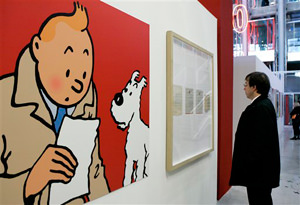
Steven Spielberg’s big-screen adaptation of “The Adventures of Tintin: The Secret of the Unicorn” is in the postproduction stage — yet another sign that the appeal of Belgian cartoonist Hergé’s Tintin is as timeless as his globe-trotting perma-adolescent wunderkind. However, as Pierre Assouline points out in his new book, “Hergé: The Man Who Created Tintin,” Tintin led a far more colorful life than his creator (born Georges Remi) did.
Still another Tintin-related tome, “The Metamorphoses of Tintin or Tintin for Adults” a new translation of a 1984 meditation on Tintin by Jean-Marie Apostolidès, takes a much different angle on Hergé’s tufty-haired hero. It’s not a casual read, according to The New Republic’s Nathan Perl-Rosenthal, who calls the book “a psycho-political study of Tintin’s growth over the course of the entire series.” (Insert appropriate drunken-Captain-Haddock exclamation here.)
Your support matters…The New Republic:
Assouline, a journalist, makes the best of the grey-all-over Georges Remi by exploring the contrasts between his life and the colorful figures he invented, Tintin and Hergé. The boy reporter, unlike Remi, is virtually stateless and always ready to set out across the globe on a new adventure. They were physical opposites as well: fans who met the lanky, long-faced Remi were sometimes surprised to find that he did not have Tintin’s round face, small stature, or tuft of blond hair. But the most extreme contrast between them, as Assouline tells it, was moral. Although Remi and Tintin had a similar moral code, rooted in the Catholic scout movement of Remi’s childhood, they felt and acted in very different ways. Remi seemed to experience injustice only obliquely and he very rarely took action against it. Tintin, on the other hand, always leaps to the defense of an injured party and metes out instant, rough justice.
The moral divide between Remi and Tintin-Hergé yawned widest during and after World War II. Remi chose to spend the war in his German-occupied homeland, where he continued to work unmolested, thanks to longtime links to right-wing figures. The help of powerful collaborators enabled him to publish new adventures in spite of a severe wartime paper shortage. Most damningly, he accepted work with a Belgian newspaper, Le Soir, which had been confiscated by the authorities to serve as a propaganda organ. The German-controlled paper published, among other things, defenses of fascism and anti-Semitic screeds. Hergé’s cartoons provided a great boost to the paper’s popularity in the face of a boycott of its pages by many well-known Belgian writers and artists. Indeed, his role led the resistance, on the eve of the liberation, to brand him one of the forty leading journalist collaborators.
Independent journalism is under threat and overshadowed by heavily funded mainstream media.
You can help level the playing field. Become a member.
Your tax-deductible contribution keeps us digging beneath the headlines to give you thought-provoking, investigative reporting and analysis that unearths what's really happening- without compromise.
Give today to support our courageous, independent journalists.
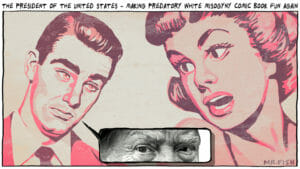
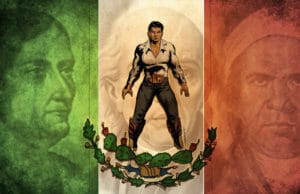

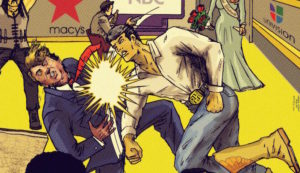
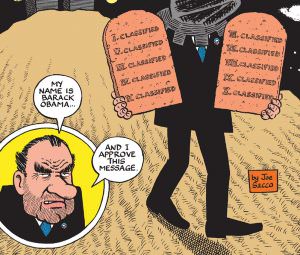
You need to be a supporter to comment.
There are currently no responses to this article.
Be the first to respond.